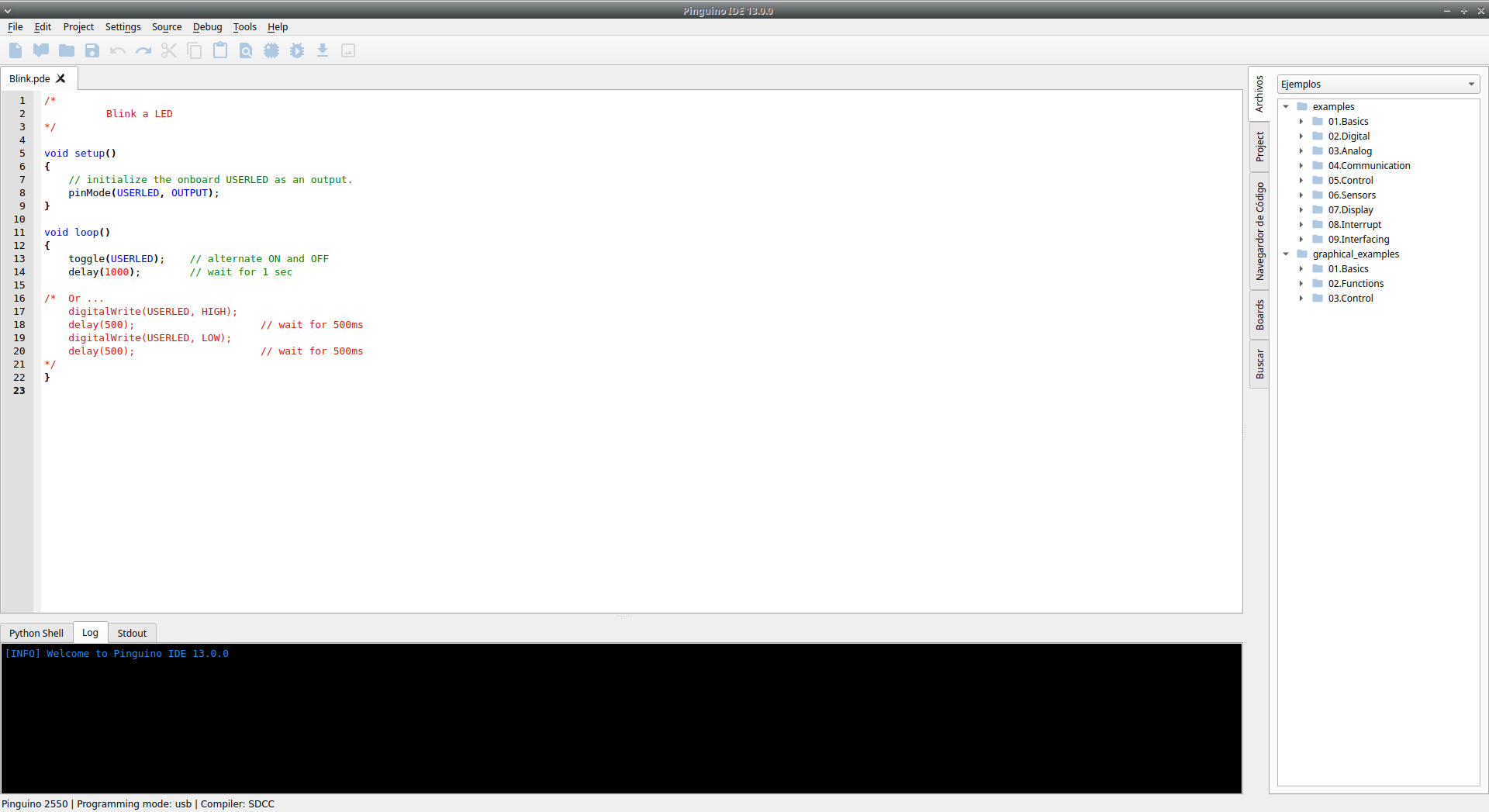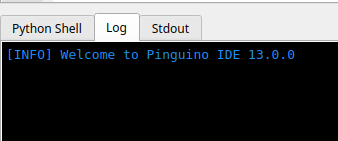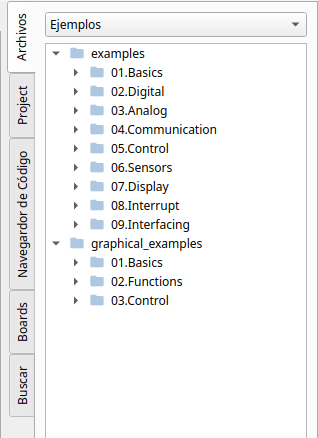IDE User manual
The Pinguino Integrated Development Environment or Pinguino IDE main window contains a text editor for writing code, a Python shell console, a log console, a stdout windows, a toolbar with buttons for common functions, a sidebar, a status bar and a series of menus. It connects to the Pinguino board to upload programs and communicate with them.

Menu
Additional commands are found within the eight menus: File, Edit, Project, Settings, Source, Debug, Tools, Help.
Toolbar
The toolbar buttons allow you to create new files, create new block file, open files, save the current file, undo the last action, redo, cut the selected code, copy, paste, search, select the right Pinguino board, compile and upload your code to the board, and save the compiled image; in that order.
Text editor
The programs are writen in the text editor area and are saved with the *.pde extension. The editor has the following features:
- Cutting/copy/pasting text.
- Searching/replacing text.
- Undo/redo actions.
- Comment/uncomment regions.
- Indent/Outdent.
- Manage one or more files simultaneously through tabs.
The text editor also have autocomplete capabilities, syntax highlighting and program line numbers.
Log console
The message log area gives feedback while compile and upload code to the board, and also displays errors.

Side bar
Sidebar is divided into five main tabs: Files, Project, Code browser, Boards, and Search.

Status bar
The status bar provides information about the board type, programming mode and compiler currently selected in the IDE.
